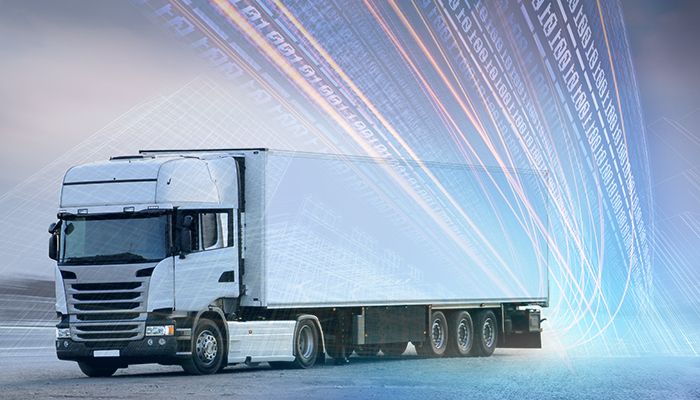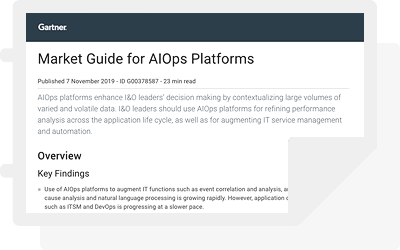The world is constantly changing. This simple fact is never more obvious than when you work in the technology industry which seems to be constantly on the brink of the next big thing. While not every piece of new technology or innovation within the industry will change the world, keeping tabs on new tech and the terms that come along with itself is essential for staying on top of the technology world.
This is especially true due to the ever-increasing complexity of technology, thanks to it being built upon the technology of yesterday to create the advancements of tomorrow. If you fall behind on current and rising trends, you’ll have a much harder time understanding what’s being built upon those technologies. The only way to beat this cycle is by keeping yourself informed as best as possible.
In the pursuit of doing just that, we delve into the technology world on a constant basis and share our findings here on our blog. Today, we’re going to be discussing a term and trend in the industry that is poised to impact our everyday lives: the empowered edge.
What is the Empowered Edge?
The empowered edge, sometimes called device democracy, is a concept that involves shifting computing transactions (processing and traffic) from the “center” of computer networks (servers) to the “edge” of those networks (the devices themselves). Gartner defines edge computing as “a computing topology in which information processing and content collection and delivery are placed closer to the sources, repositories and consumers of this information.”
As an example, a self-driving network of cars taking advantage of the empowered edge approach might make use of devices within the cars to communicate directly with other vehicles on the road instead of the information being routed through a central cloud server. One of the primary benefits of the empowered edge approach is the reduction of latency. This is achieved by having devices cut out the middle-man that is the central computing device and letting them communicate directly with one another instead.
This type of networking is called peer-to-peer or decentralized networking and is becoming more of a reality every day.
Why is Now the Time for the Empowered Edge?
The empowered edge is a rising trend due, in part, to the fact that modern technology has advanced to a point where once simplistic devices are now considerably powerful computing devices relative to their older counterparts. The technology we carry around in our pockets today far exceeds what was used to land a state-of-the-art rocket on the moon a handful of decades ago.
This drastic increase in computing power and its relatively cheap cost extends to all kinds of “smart” devices like TVs, refrigerators, and watches which are capable of performing complex computing tasks that make a NASA computer from the late 60s look like a not-so-distance relative of the abacus. The capabilities of modern technology play a massive role in the possibility of an empowered edge as it is envisioned.
The idea of the empowered edge is directly related to the concept of the Internet of Things (IoT) which takes advantage of all these smart devices by enabling them to communicate and network with each other. The IoT is quickly evolving from concept to reality as many industries utilize devices like smart meters that go beyond taking and recording measurements to analyzing those measurements and sending reports based on that data.
According to Gartner, the empowered edge and the IoT architecture still uses a hierarchical structure where data flows “through well-defined layers of endpoints to the near edge, sometimes the far edge and, eventually, centralized cloud and enterprise systems.” However, the day when these layers dissolve and data flows more freely throughout systems between empowered edge devices is fast approaching.
Cheap and portable computing power and storage devices are primary factors in creating empowered edge networks, but bandwidth also plays an important role. 5G technology is likely the keystone that will herald the rapid development and adoption of the empowered edge approach. Thanks to its ability to transmit large amounts of data with virtually 0 latency, 5G technology is poised to make what seems impossible today into an everyday occurrence.
What Might the Empowered Edge Look Like?
Empowered edge devices and the IoT architecture will enable things like self-driving automobiles to communicate with each other, but other technologies can make use of the empowered edge approach as well. Endpoint devices will be empowered by their ability to analyze information and transmit that data directly to other endpoint devices. These networks and their endpoint devices will vary in complexity and capabilities.
The spectrum of endpoint devices will range from simple things like appliances and industrial meters to complex devices like smart cars and power generators. Other endpoint devices will include input/output devices such as touchscreens and cameras as well as things like smartphones and PCs. Endpoint devices are also likely to vary drastically in terms of life span which will create an environment of increasing complexity when it comes to managing and integrating these new edge networks with the full gamut of devices.
Gartner predicts that as early as 2022, “75% of enterprise-generated data will be created and processed outside the traditional, centralized data center or cloud — an increase from the less than 10% generated today.” The impacts of edge computing will be felt first by those who are on the front line of the technology sector as network complexity increases and new solutions are required.
The benefits offered by the empowered edge and the current state of the technology that can support it make its future implementation all but guaranteed across practically every sector. The IoT and edge computing seem inevitable, but that doesn’t mean this technology will develop itself. Nor does it mean this new technology won’t come with its own complications and obstacles to overcome. However, it does mean that we are living in an exciting time where people on the frontlines of the technology sector are set to play an active role in shaping the future.







